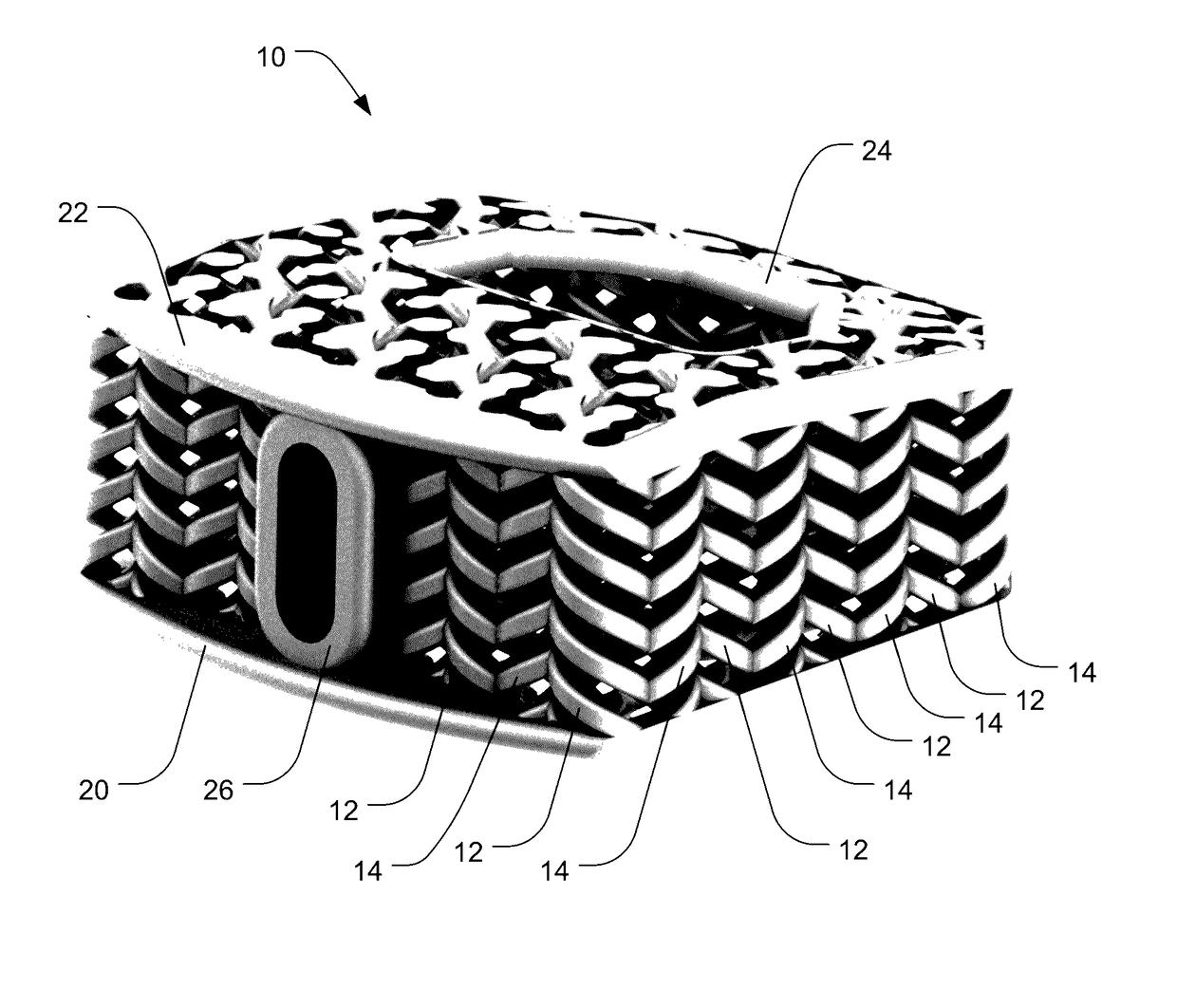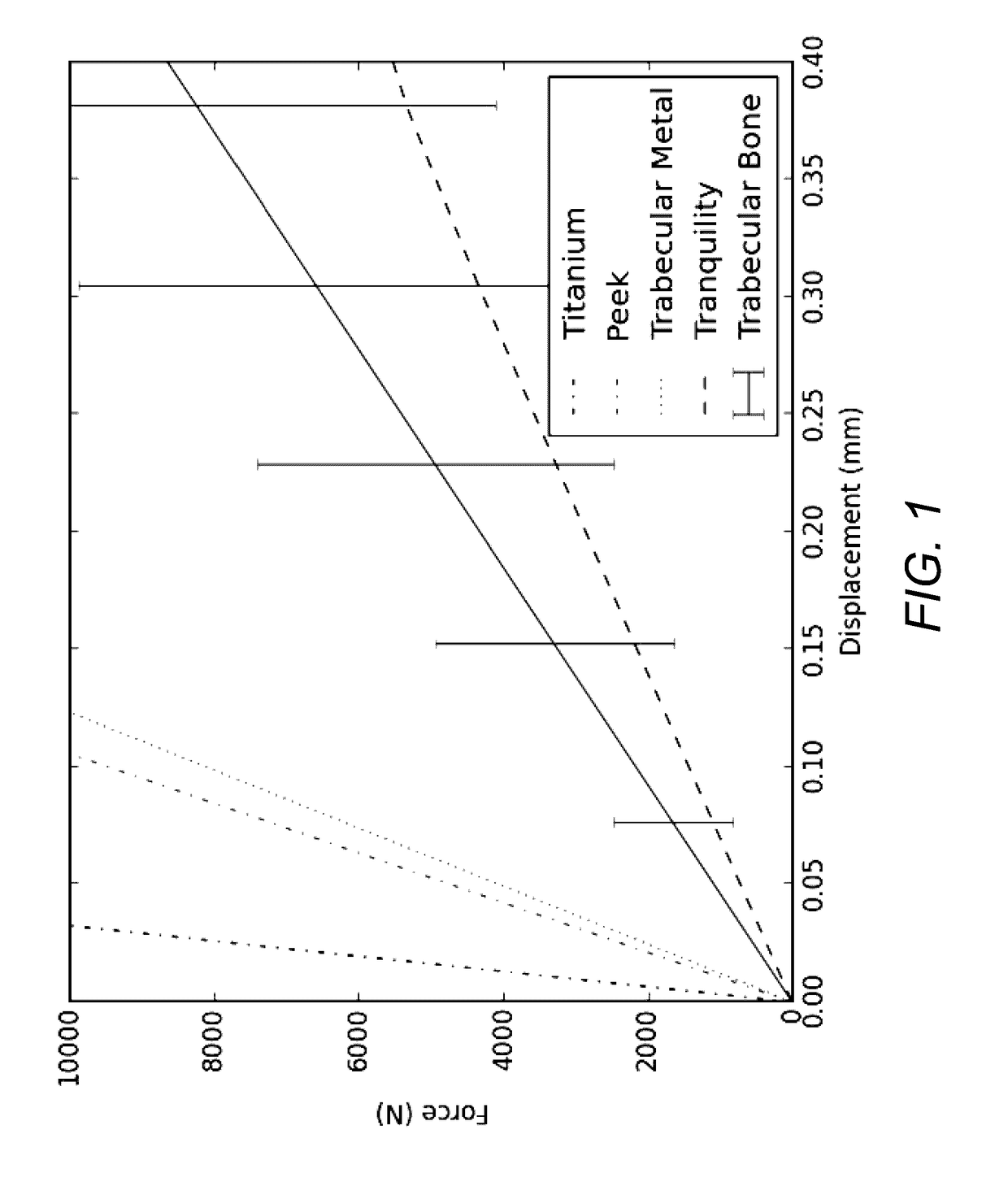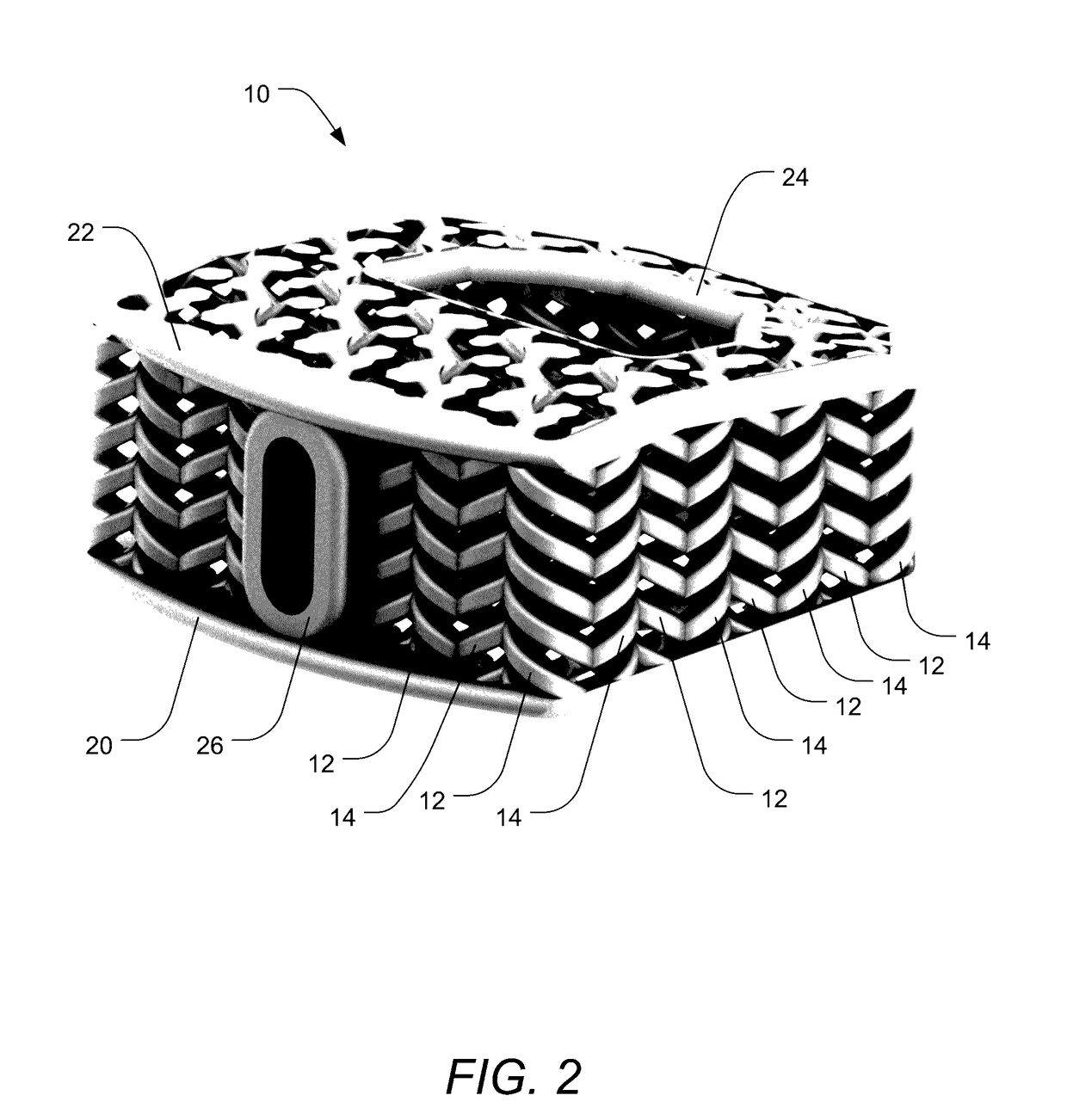Porous Interbody Spacer
a spacer and interbody technology, applied in the field of spinal fusion implants, can solve the problems of limited success of such devices, bone cannot or will not grow, and cannot bridge the gap, and achieve the effect of correcting the pore siz
- Summary
- Abstract
- Description
- Claims
- Application Information
AI Technical Summary
Benefits of technology
Problems solved by technology
Method used
Image
Examples
Embodiment Construction
[0039]A description of embodiments of the present invention will now be given with reference to the Figures. It is expected that the present invention may take many other forms and shapes, hence the following disclosure is intended to be illustrative and not limiting, and the scope of the invention should be determined by reference to the appended claims.
[0040]Embodiments of the invention provide orthopedic implants, particularly implemented in the current examples as interbody spacers, the implants having a combination of correct pore size and stiffness / flexibility. Embodiments of the invention also provide methods for producing such orthopedic implants. When the implants have the proper pore size and stiffness, osteocytes are able to properly bridge the pores of the implant and then experience a proper compressive load to stimulate the bone cells to form bone within the pores throughout the implants according to Wolff's law.
[0041]According to embodiments of the invention, an impla...
PUM
 Login to View More
Login to View More Abstract
Description
Claims
Application Information
 Login to View More
Login to View More - R&D
- Intellectual Property
- Life Sciences
- Materials
- Tech Scout
- Unparalleled Data Quality
- Higher Quality Content
- 60% Fewer Hallucinations
Browse by: Latest US Patents, China's latest patents, Technical Efficacy Thesaurus, Application Domain, Technology Topic, Popular Technical Reports.
© 2025 PatSnap. All rights reserved.Legal|Privacy policy|Modern Slavery Act Transparency Statement|Sitemap|About US| Contact US: help@patsnap.com



